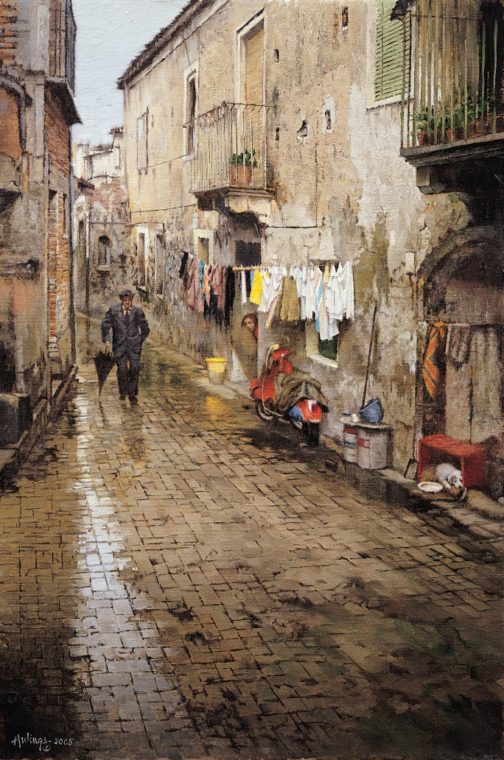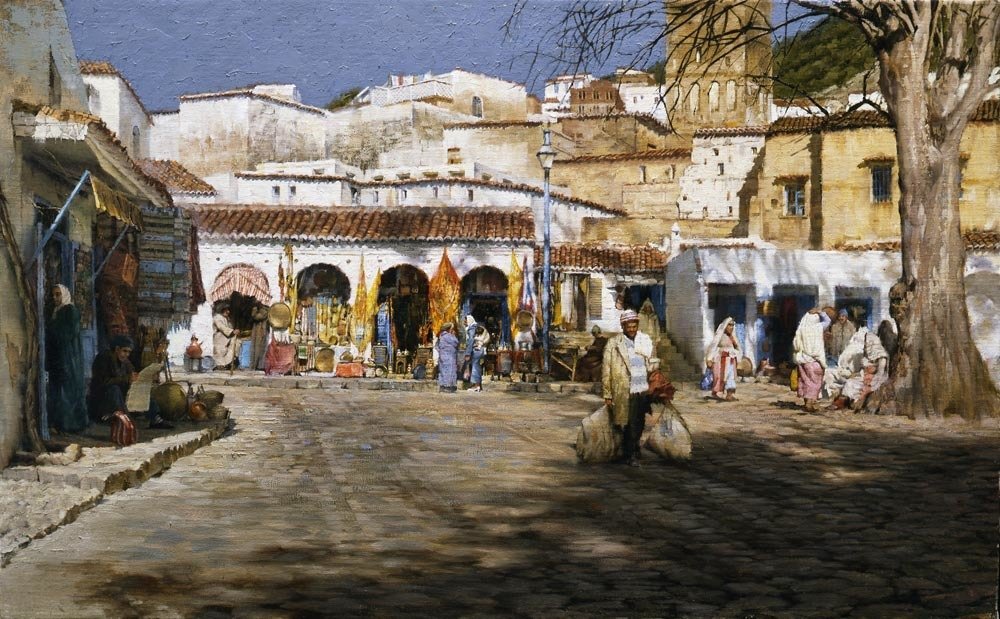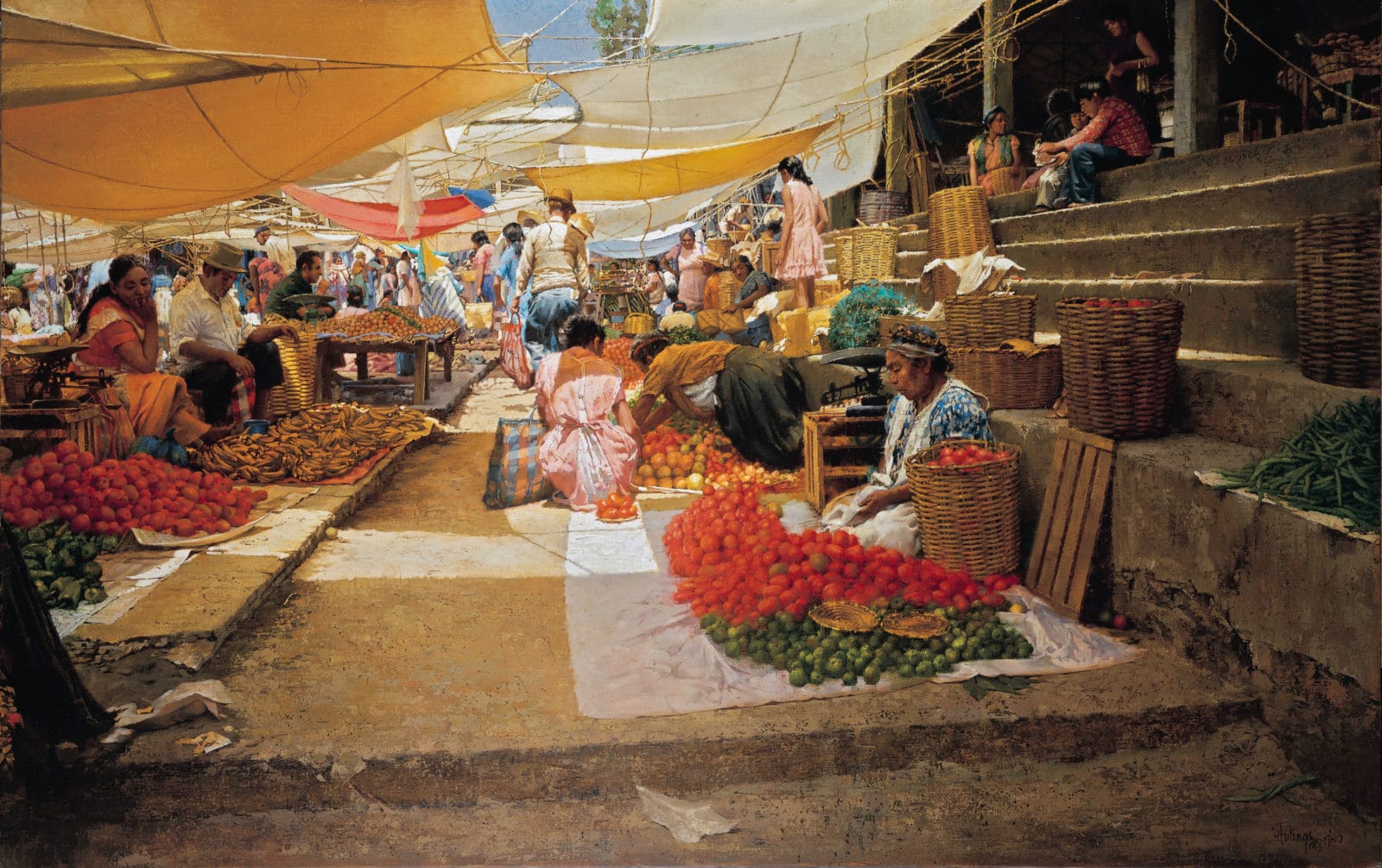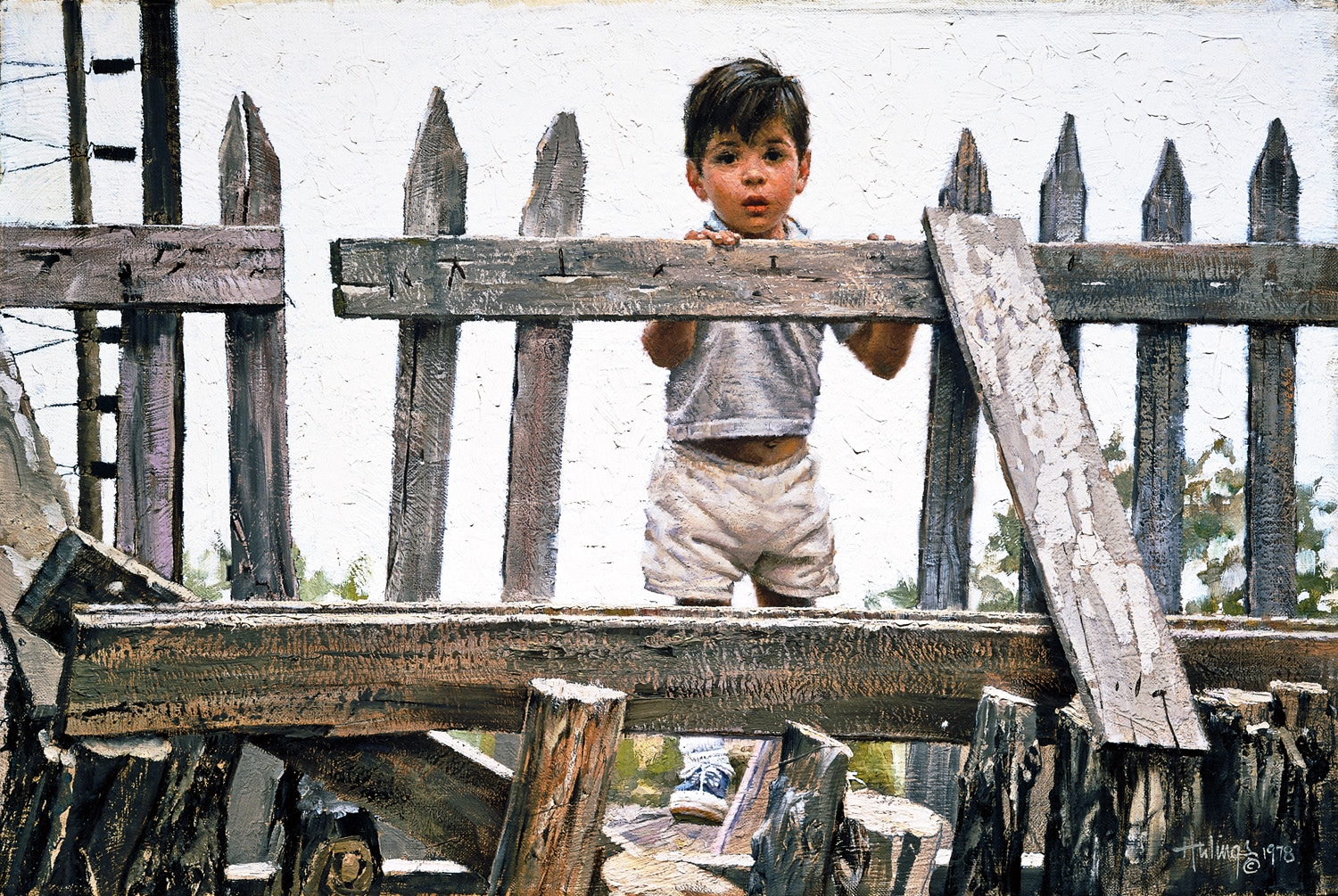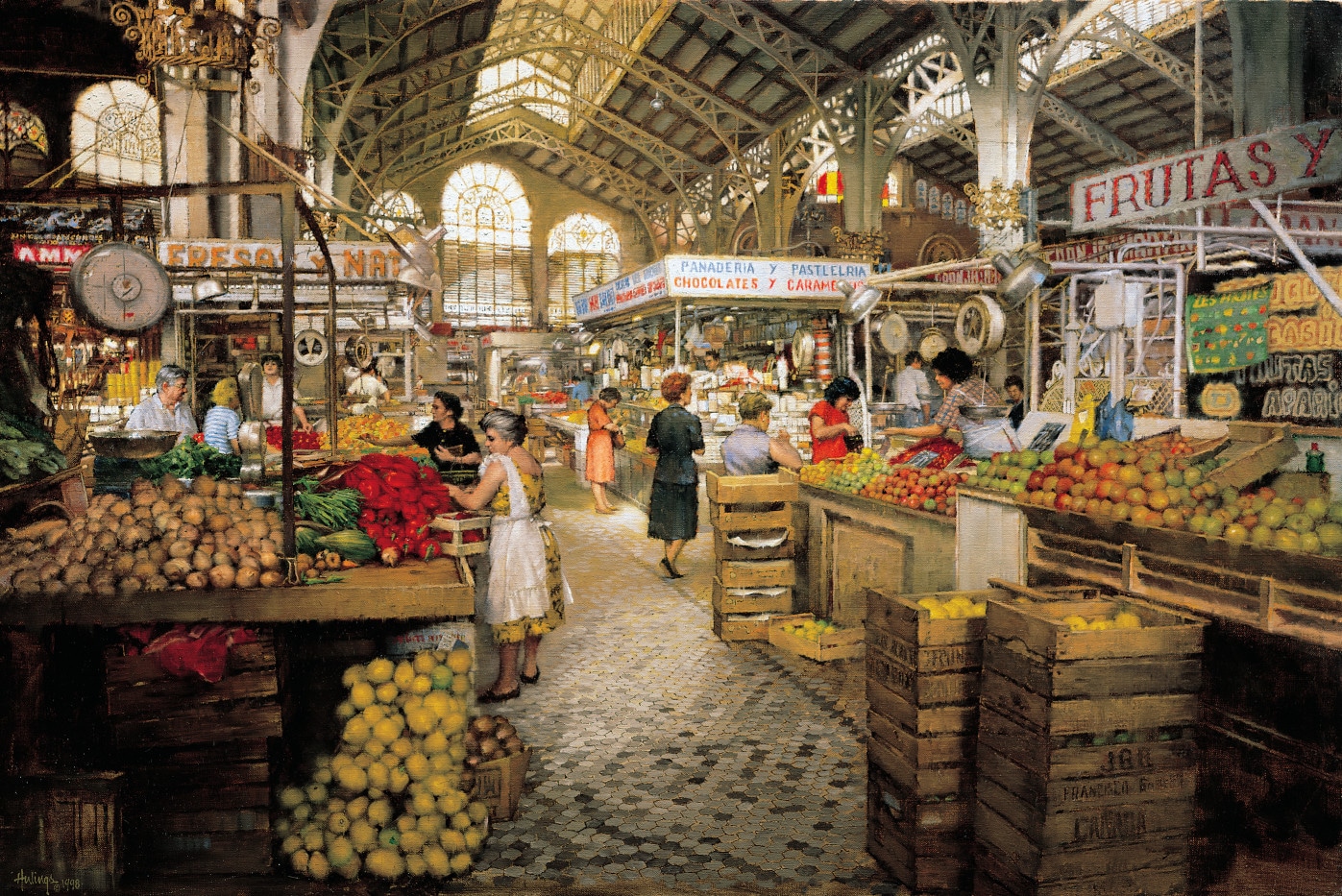“Sometimes the irregular is what makes things beautiful, Mr. De Meo said.”
—Jason Horowitz
Traditional crafts become even more precious as industrialization becomes ever-more present. So many stories are bound-up in the skills transmitted through generations of artists and makers. A recent Jason Horowitz New York Times piece features a current photo of the “pasta street” in Bari, Italy. Gianni Cipriano’s photo is remarkably reminiscent of Hulings’ Italian street scenes, with the narrowing perspective on the stone street, the placement of a few figures going about their work days and not looking at the viewer, the drying laundry—and yes, even a red accent! Clearly the environment and way of life that he depicted continues to exist and be absolutely relevant.
Senior Experts
That said, the article focuses on the fact that the craft of making fresh orecchiette—a classic, ear-shaped pasta—in small, handmade batches, is under fire from Italian and EU restaurant regulators. Many of the serious experts of the craft are Nonnas: Grandmothers in their 80s and 90s who feel the urgency of passing the Bari pasta tradition onto their technology-obsessed children and grandchildren, and the pressures of a globalizing world around them.
Keepers of Craft
Advocacy for artists and craftspeople is also a respect for culture: whether the form expresses traditional or innovative ideas, if the product is utilitarian or entertaining; makers all over the world are custodians and inventors of culture, and no one can replace them. Many craftspeople’s work expresses strong local ties: in the ingredients sourced to make a pasta, the wood for a cabinet, or the fabric for a dress; in the skill of the specific regional styles learned from a master or parent—we experience the flavor of a people, place and time. My father understood the beauty and value of tradition, even as he broke so many in the course of his work. He knew that respect and honor for time-honored ways of working, and for excellence in execution, are essential, even as we perpetually “make progress” and innovate. Similarly, the orecchiette-making Nonnas of Bari are living in the modern world, even as they continue to share their traditional artistry and industry.
A Sense of Perspective
Hulings’ Rainy Sicilian Street is a 2005 painting, but the subject matter spans eras. The red Vespa and the bright yellow plastic bucket date it to the twentieth century, but the shining stone street and the patina on the walls developed over centuries, and the girl peeking out and dog hiding from the rain in the red crate are timeless. In the most unsentimental way, Hulings asks us just to take in specific slices of daily life, directing our attention to work, connection, tradition, and change.
Timeless Beauty
If you love this slice of life, Rainy Sicilian Street is one of the color plates in the 2007 catalogue Timeless Beauty, which you can pick up at the online Hulings Store.

